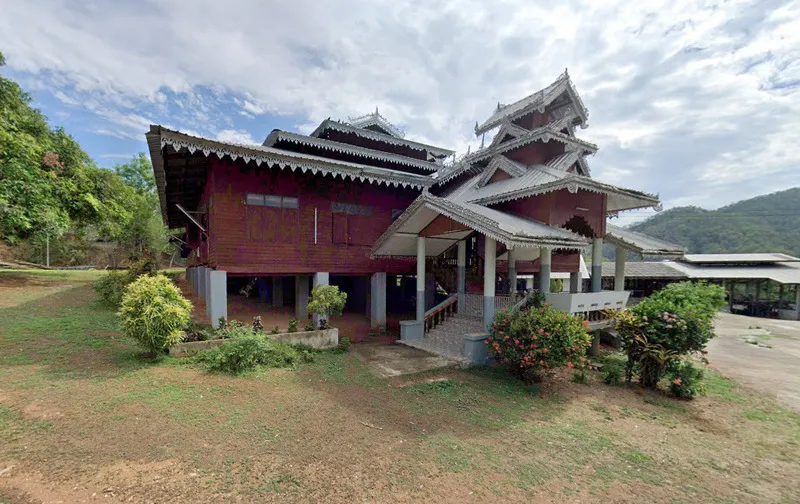Wat Sop Pong

Rating: 3.6/5 (5 votes)
Mae Hong Son attractions
Attractions in Thailand
Operating day: Daily
Operating time: 08.00 - 17.00
Wat Sop Pong Attractions in Mae Hong Son Pang Mu, Muang Mae Hong Son, Mae Hong Son. Wat Sop Pong (Pang Mu) belongs to the Maha Nikaya sect of Thai Buddhism and covers an area of 5 rai, 2 ngan, and 93 square wah. Its boundaries extend approximately 148 meters to a public pathway in the north and 40 meters to a public road in the south. The temple also holds one parcel of monastic land measuring 1 rai.
Wat Sop Pong was originally established in 1919 (B.E. 2462). However, due to flooding at its initial location, the temple was relocated to its current site in 1981 (B.E. 2524). Locals often refer to it as "Wat Sop Pong Tai." The temple also serves as a hub for community activities, housing a rice bank and providing facilities for village meetings, training sessions, and government seminars.
The temple environment is characterized by its open and spacious layout. A sports field is available for youth activities, while the rice bank, managed by villagers, is situated near the field. The ordination hall, constructed in traditional Shan architectural style, stands opposite the meditation hall. A newly built pagoda, blending Burmese and Shan art styles, is located at the back of the temple and is admired for its exquisite design.
The administration and governance of Wat Sop Pong have been overseen by a succession of abbots. Notable abbots include Phra Athikan Sawa (serving in 1919), Phra Athikan Sila Silavaro (1920–1921), Phra Athikan Suriya Suriyo (1925–1956), and Phra Songn Samacharo, who has served since 1997 (B.E. 2540).
Significant features of Wat Sop Pong include its ordination hall, meditation hall, and kitchen facilities. The temple is home to notable religious artifacts, such as a Buddha image crafted from a mixture of powdered clay, known locally as "Salo," in the Shan style, as well as a Buddha image cast in metal.
Comment
| Keyword (Advance) |
 Facebook Fanpage
Facebook Fanpage

 Category:
Category:  Group:
Group:  Art, Culture and Heritage
Art, Culture and Heritage Historical Sites and Monuments(
Historical Sites and Monuments( Landmarks and Memorials(
Landmarks and Memorials( Art, Craft Centres, Tradition(
Art, Craft Centres, Tradition( Museums(
Museums( Educational Places
Educational Places Educational Gardens, Farm(
Educational Gardens, Farm( Other religious and spiritural sites(
Other religious and spiritural sites( Research and Development
Research and Development Royal Project(
Royal Project( Suburban Living
Suburban Living Village, Community(
Village, Community( Local Market(
Local Market( Nature and Wildlife
Nature and Wildlife National Parks and Marine Reserves(
National Parks and Marine Reserves( Mountain (Doi)(
Mountain (Doi)( Dam, Reservoir, Lake(
Dam, Reservoir, Lake( Waterfalls(
Waterfalls( Hot Springs(
Hot Springs( Caves(
Caves( Flower Field(
Flower Field( River, Canal(
River, Canal( Other natural attractions(
Other natural attractions( Entertainment and Agricultural
Entertainment and Agricultural Farm, Parks, Gardens and Ecotourism(
Farm, Parks, Gardens and Ecotourism( Shopping
Shopping Shopping and Night Market(
Shopping and Night Market( Travel Articles, Recipes
Travel Articles, Recipes Travel Review, Food Review(
Travel Review, Food Review(